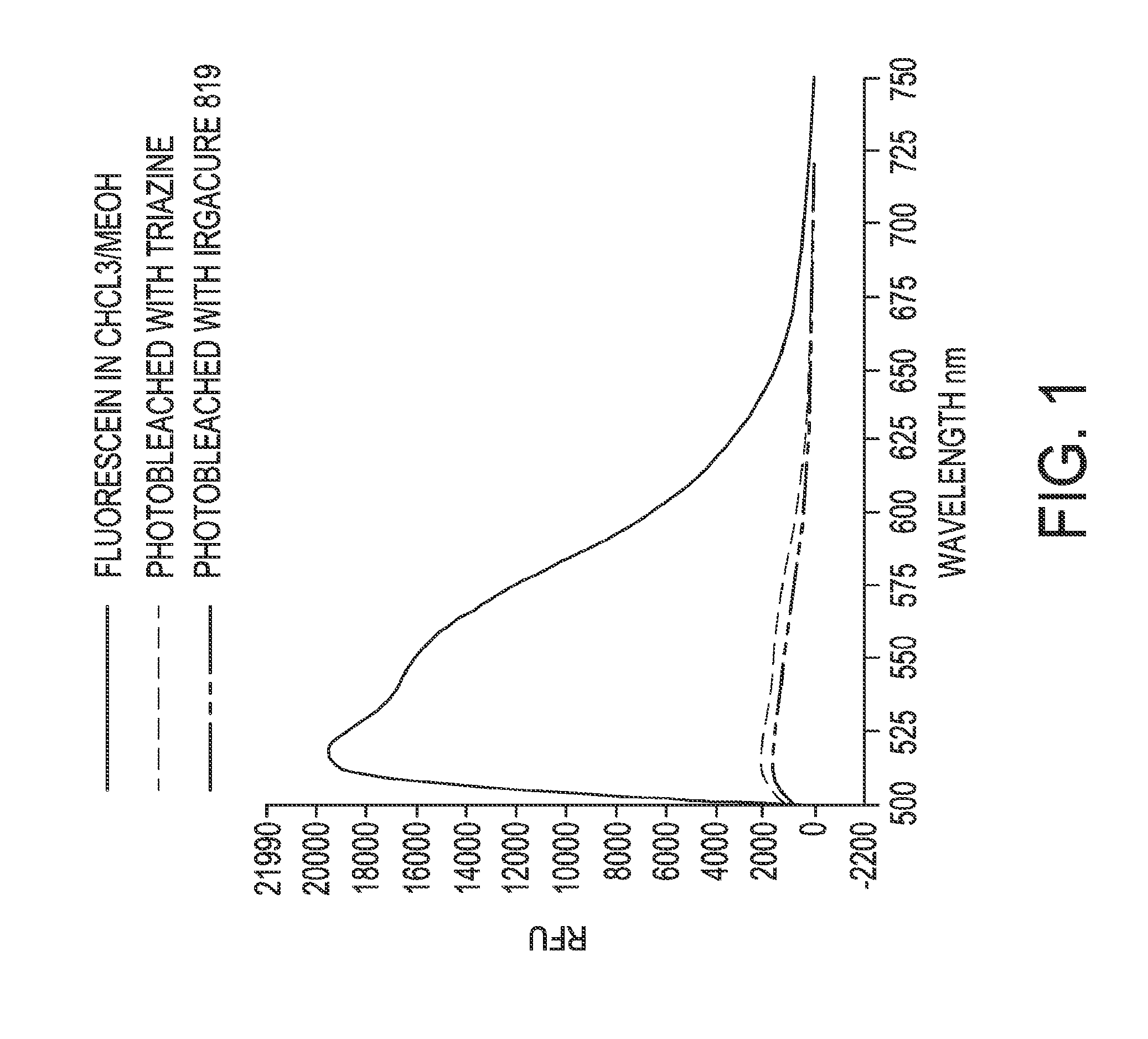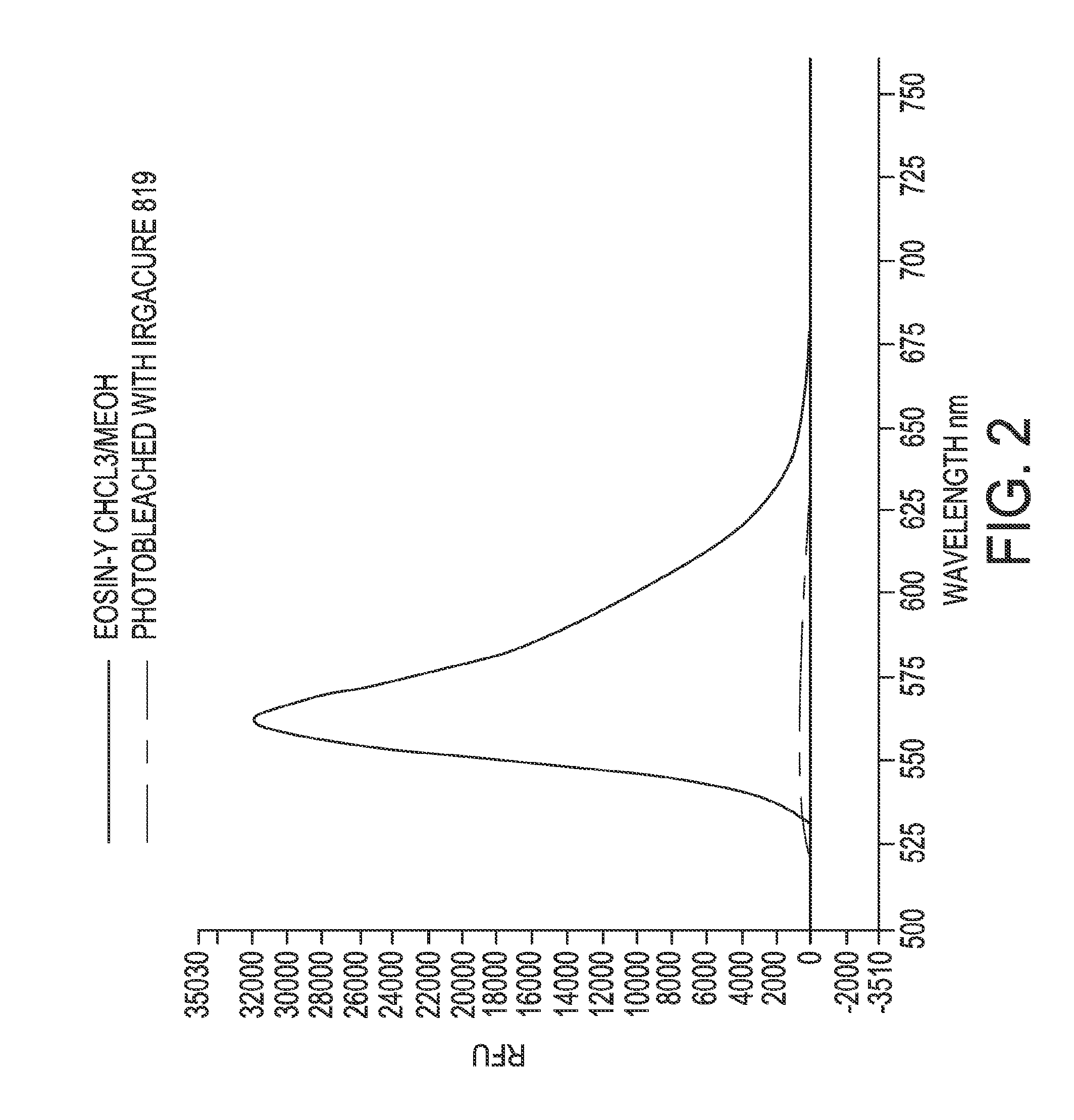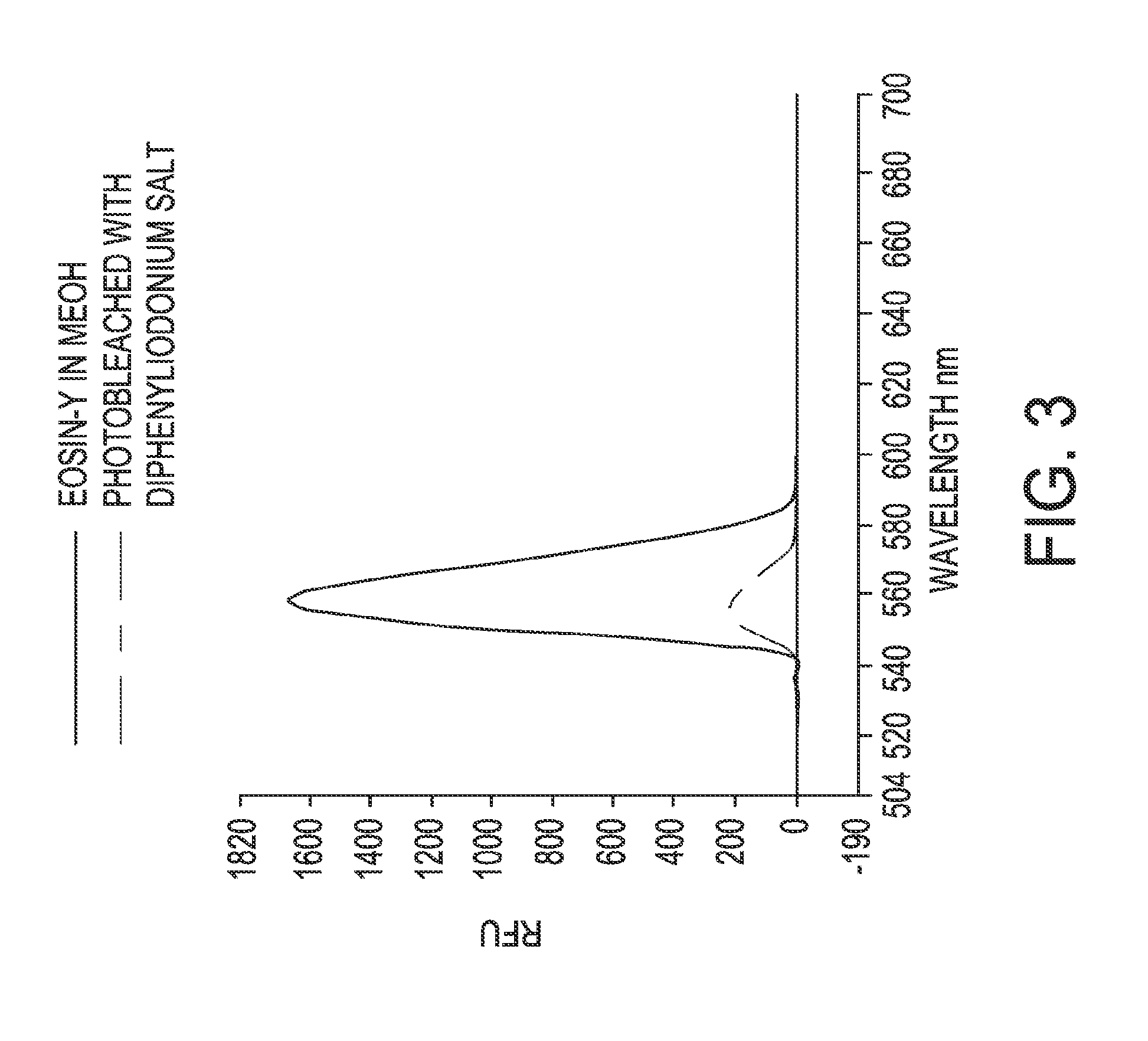Chemical bleaching of dyes using radical photoinitiators
- Summary
- Abstract
- Description
- Claims
- Application Information
AI Technical Summary
Benefits of technology
Problems solved by technology
Method used
Image
Examples
example 1
Chemical Bleaching of Fluorescein Using Photoinitiators
[0255]The bleaching reaction of fluorescein 0.75 mM was carried out in chloroform / methanol alone, with 2.2 mM solution of Methoxy styryl bis trichloro methyl triazine, or 2.4 mM solution of Irgacure 819. Irradiation of the samples was carried out for 5 minutes under 330 nm lamps rayonet reactor. FIG. 1 shows a fluorescence spectrum of fluorescein before and after bleaching, under each condition, respectively, measured using the Nanodrop Instrument (Thermo Scientific). The fluorescence spectrums demonstrate complete fluorescence quenching of fluorescein by chemical bleaching using both photoinitiators tested.
example 2
Chemical Bleaching of Eosin-Y Using Photoinitiators
[0256]In one experiment, the bleaching reaction of Eosin-Y 0.4 mM was carried out in chloroform / methanol or with 2.4 mM solution of Irgacure 819. In another experiment, the bleaching reaction of Eosin-Y 0.4 mM was carried out in methanol or with 2.32 mM solution of diphenyliodonium triflate. Irradiation of the samples was carried out for 5 minutes under 330 nm lamps rayonet reactor. FIGS. 2 and 3 show fluorescence spectrums of Eosin-Y before and after bleaching, under each condition, respectively, measured using the Nanodrop Instrument (Thermo Scientific). The fluorescence spectrums demonstrate complete fluorescence quenching of Eosin-Y by chemical bleaching using Irgacure 819, and over 85% fluorescence quenching of Eosin-Y by chemical bleaching using diphenyliodonium triflate.
example 3
Photoactivated Chemical Bleaching of Cy5 in Tissues
[0257]Preparation of Tissue Samples:
[0258]Human multi tissue array samples were obtained as tissue slides embedded in paraffin. These samples included microarray of normal, premalignant, and cancer tissues with progressive grades (Pantomics, MNT241).
[0259]Slide Clearing:
[0260]Three paraffin embedded slides were baked at 60° C. for one hour with tissue facing up and parallel to the oven rack. After baking, slides were deparaffinized by washing in xylene with gentle agitation for ten minutes. The samples were then rehydrated by washing in four solutions of ethanol with concentrations decreasing in the order of 100%, 95%, 70%, and 50% followed by a wash with 1× phosphate buffer saline (PBS, pH 7.4). After rehydration, the slides were washed with 1×PBS. A ten minute wash in 0.3% Triton X-100 in PBS was performed for membrane permeabilization of the tissue, followed by a wash with 1×PBS.
[0261]Antigen Retrieval:
[0262]After the slide clear...
PUM
| Property | Measurement | Unit |
|---|---|---|
| Temperature | aaaaa | aaaaa |
| Time | aaaaa | aaaaa |
| Wavelength | aaaaa | aaaaa |
Abstract
Description
Claims
Application Information
 Login to View More
Login to View More - R&D
- Intellectual Property
- Life Sciences
- Materials
- Tech Scout
- Unparalleled Data Quality
- Higher Quality Content
- 60% Fewer Hallucinations
Browse by: Latest US Patents, China's latest patents, Technical Efficacy Thesaurus, Application Domain, Technology Topic, Popular Technical Reports.
© 2025 PatSnap. All rights reserved.Legal|Privacy policy|Modern Slavery Act Transparency Statement|Sitemap|About US| Contact US: help@patsnap.com



